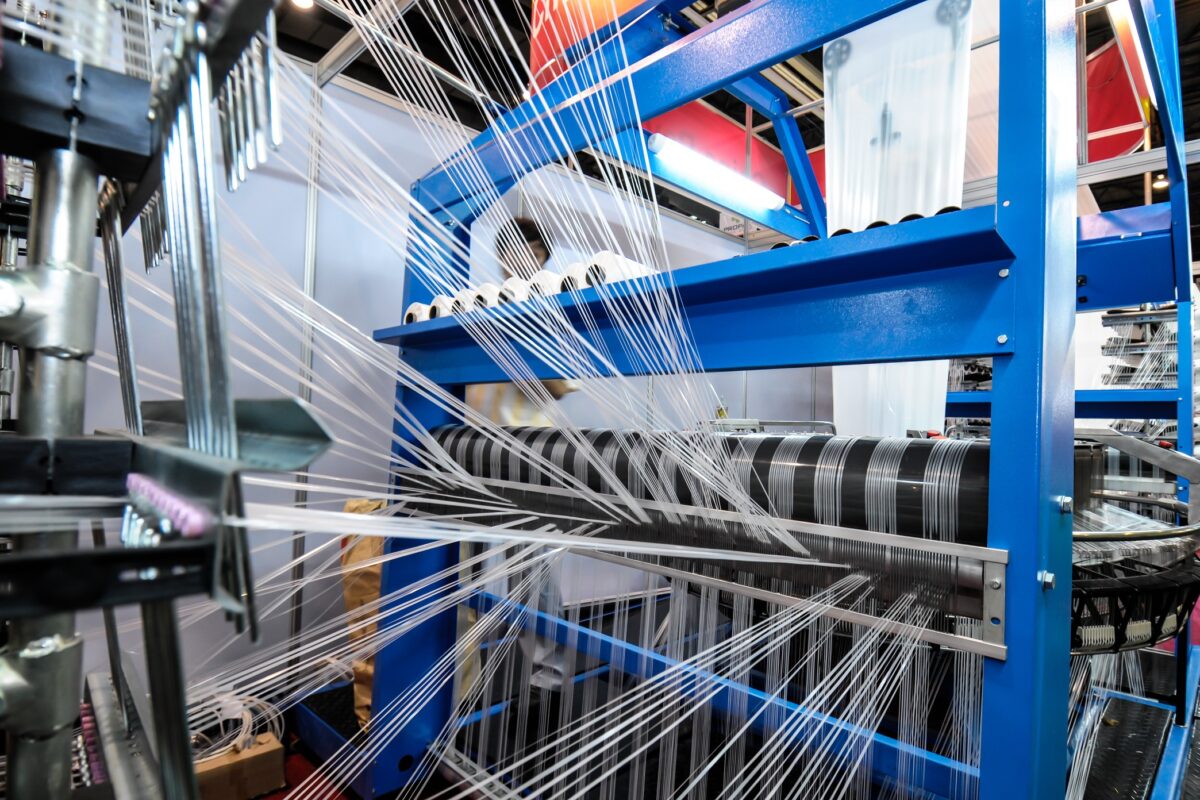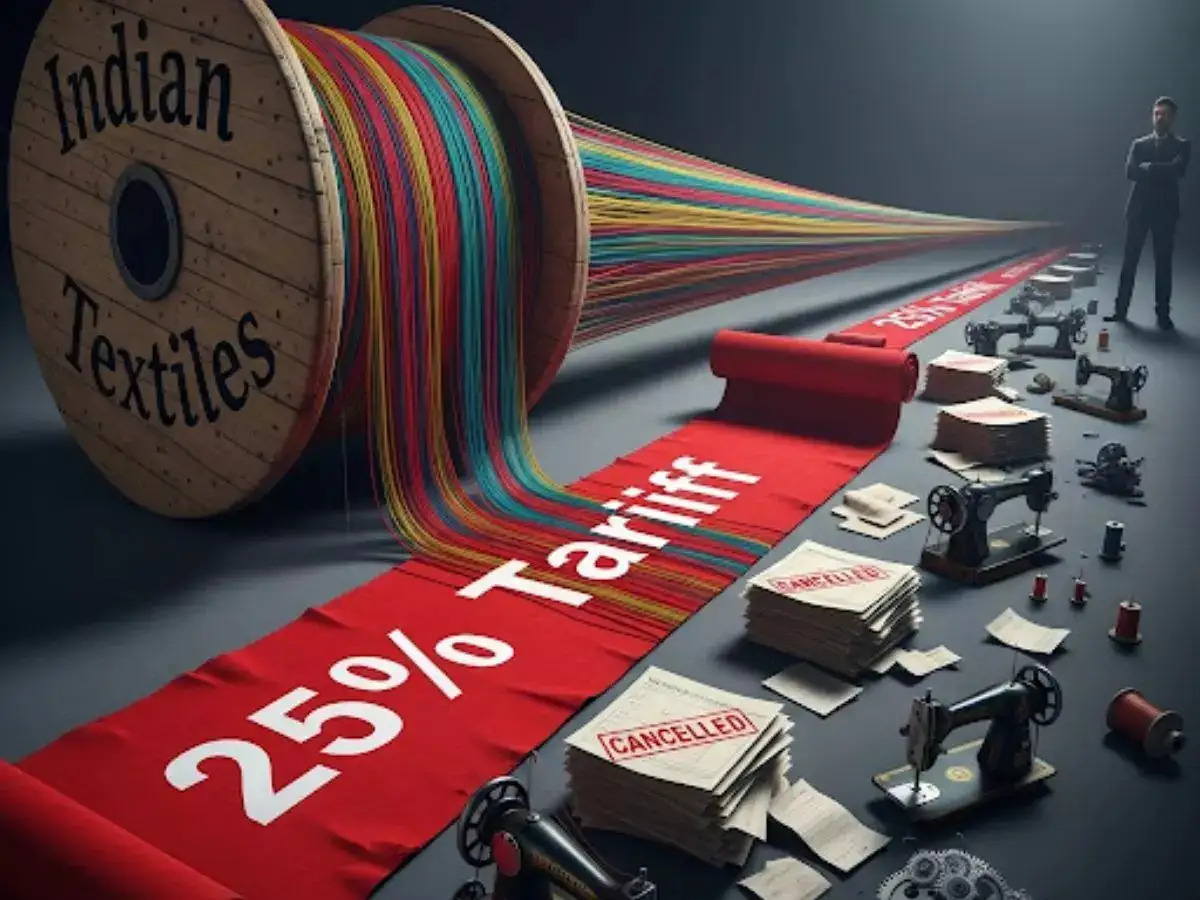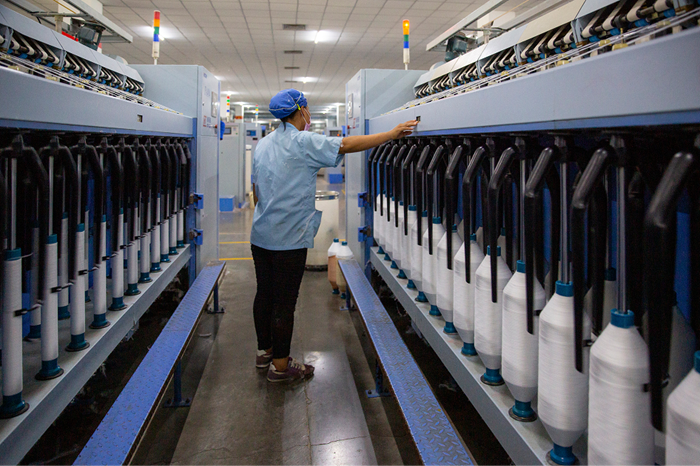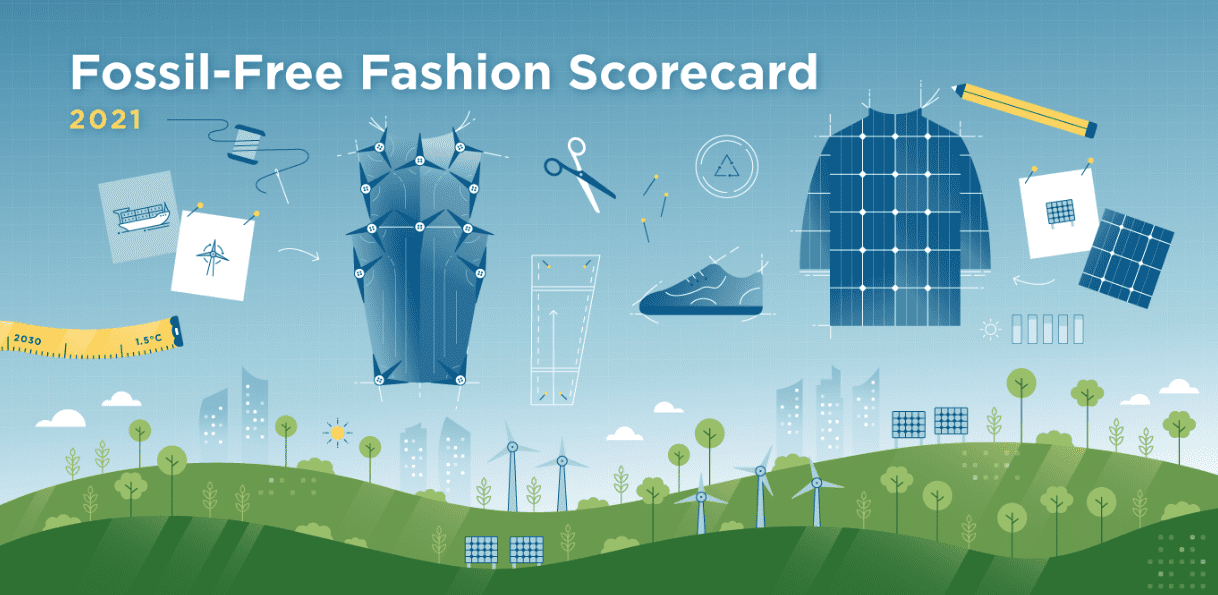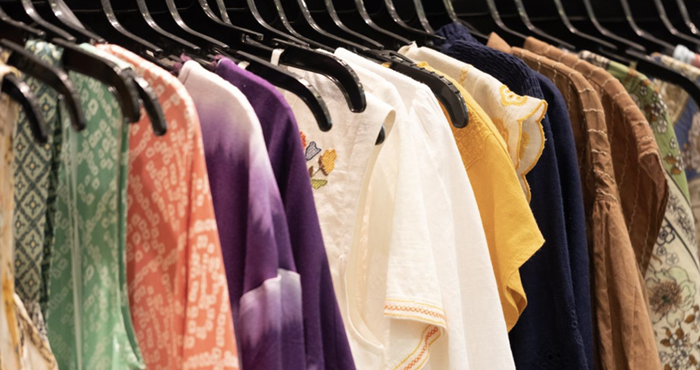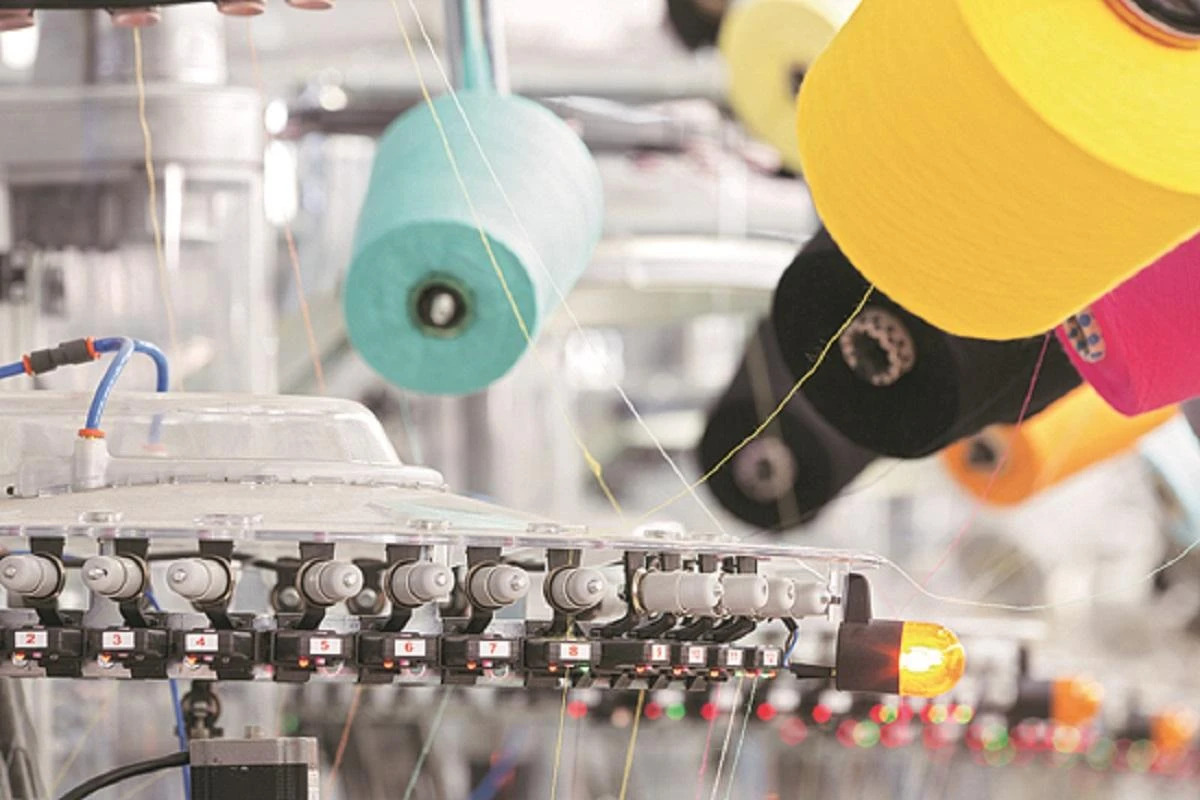FW
The US Department of Agriculture (USDA) reports price of cotton is forecast to fall by 12 per cent next season, despite a steep rise in Chinese imports and the prospect of 20 per cent of the crop in drought-hit US Southern plains being lost. The USDA, presenting its first full estimates for world cotton supply/demand in 2018-19, forecast the Cotlook, A index of physical prices, will “decline about 10 cents to 73 cents a pound” on a year-average basis.
The forecast came despite an estimate that world cotton stocks will drop by 5.9m bales to a seven-year low of 82.7m bales over the season. Chinese imports may rise 40 per cent to a four-year high of 7.0m bales as the country’s drive to erode its huge state inventories, built by a now-scrapped guaranteed pricing scheme.
USDA says, “China’s reserve could fall to just about 20 per cent of its peak of 53m bales by the end of 2018-19.”
Inventories outside China, which in available to the world market are more significant in pricing, were estimated to rise next season by around 1.4m bales to a record high of 49.1m bales. Increased supplies outside of China are expected to pressure cotton prices in 2018-19.
In the US, officials forecast stocks will stabilise at 6.0m bales next season, due partly to a forecast of exports growth by 1.5m bales, to a 13-year high of 16.0m bales. Official US meteorologists for the southern Plains reporting on the seasonal outlook mid-February, from “indicates that drought will persist through the end of May for much of the region, with the probability of below-average precipitation forecast”.
A Dubai-based textile company manufacturing in Kenya says the high cost of power and enhanced minimum wage have raised the cost of production and their products may be out-priced in the market. United Aryan, which has been operating in Kenya for the last 16 years, is not happy to pay higher energy tariffs/wages as against countries such as Ethiopia, Rwanda, Malawi and Egypt where the cost of labour is much cheaper. The minimum wage in Kenya is Sh13,475 and forecast to rise to Sh15,372 this year if recommendations, by the Central Organisation of Trade Union secretary-general Francis Atwoli, to the Federation of Kenya Employers is ratified.
United Aryan’s founder and chairman Pankaj Bedi says manufacturing sector in Kenya has a huge potential for growth unlike other countries in East African region. The only challenge they are facing at the moment is the high cost of power and high wages which have left them struggling to meet production costs.
Kenya also charges organisations around $0.15 per kilowatt an hour when taxes and other levies are incorporated, which also makes business uncompetitive as against Ethiopia where manufacturers pay about 0.4 (Sh4.14) per kilowatt hour. Bedi says a number of companies will prefer setting up their operations in Ethiopia because the cost of power, land and labour is cheaper.
Products in Kenya can only remain competitive if electricity tariffs are charged at $ 0.7 (Sh7) per kilowatt hour, he said. Should the situation persist, companies planning to set up bases in Africa will prefer operating in countries where the cost of power and labour is relatively cheaper. The laid back performance of the sector has been seen as the reason Kenya failed to achieve the targeted sustainable annual 10 per cent growth in GDP from 2010 as envisioned in the Vision 20130 plans.
Sensient has introduced a new range of high-performance digital pigment inks. Xennia Emerald PC is suitable for direct printing of textiles. Based on innovative dispersion and binder technology, Xennia Emerald PC changes the game for printers by offering excellent color strength with unrivalled printing performance.
Designed to maximise printing performance in production environments, Emerald PC inks also offer the peak in color performance with an optimized ink set to provide an extended gamut. These inks deliver minimised pre- and post-processing by including a revolutionary binder technology within the ink, eliminating the need to use a post application fixing polymer.
Key to the performance of Emerald PC is including a binder within the ink while increasing the color strength it maximizes open time and latency. A further key advantage of Xennia Emerald PC inks is their cross compatibility with printhead technologies, allowing proofing and production with the same ink set, providing ultimate flexibility for users with multiple systems.
Sensient was the first company to release a digital pigment ink for textiles. It has applied all the learnings from the market to provide a solution to take digital pigment printing to the next level. Successfully printed on a range of digital printers, the developed inks show exceptional print and color performance.
Cotton prices are becoming lower and demand for cotton is increasing in India. This has created a congenial atmosphere for profitability in the textile sector. A higher-than-expected rise in cotton acreage at 19 per cent and a consequent 11 per cent increase in crop production in fiscal year 2017-18 are likely to moderate cotton prices in fiscal year ’19.
Better margins, modest reduction in working capital requirements and subdued capex in fiscal year ’19 are expected to improve the overall credit profile. However, there are constraints due to the possible impact of pink bollworm on cotton output and prices on the outlook of the textile sector. The same was extended to the synthetic sector owing to the increase in crude oil prices.
The trend of shifting from cotton to synthetic yarns is expected to slow down as increasing crude prices will narrow down the price difference between the two categories. Operating margins of synthetic manufacturers may witness volatile margins due to crude price fluctuations and delays in passing on cost inflation. Domestic demand decelerated due to demonetization and the GST. The second half of the financial year showed the bottomed out effect due to this.
Nordstrom’s stock’s have risen close to 30 per cent since Thanksgiving, on investors’ expectations of solid profits. The company’s market capitalization is close to $9 billion. Comparable sales rose 1.2 per cent in the nine weeks ended December 30 compared with the same period last year, helped by growth at its off-price discount chain Nordstrom Rack and online businesses. The department store chain slightly raised its full-year earnings forecast at the time.
The family group, which owns 31.2 per cent of the storied retailer, is considering becoming a private company in the belief it can better manage the operational restructuring and transition to e-commerce away from the public markets.
The Nordstrom family group, which has partnered a buyout firm, had suspended its attempt to take the company private in October because of difficulties in arranging debt financing for its bid ahead of the key holiday shopping season. Investment banks at the time balked at providing the debt financing required for the bid of between seven billion dollars and eight billion dollars on terms that the family group wanted.
Nordstrom’s rival Hudson’s Bay, owner of the Saks Fifth Avenue and Lord & Taylor retail chains, also explored going private last year, though these considerations did not progress.
H&M expects 2018 to be a challenging year. Same-store sales are expected to see growth only in 2019. H&M continues to battle through high levels of inventory and sub-par styles on sales floors around the world, which will weigh on profits this year. The fast fashion retailer has over 4,000 stores globally and expects online sales to grow 25 per cent in 2018.
Ultimately, investors will continue to heavily discount a more bullish longer term outlook until supportive trading evidence starts emerging. Competition is getting fierce. Primark, which is known for its ultra cheap clothing, has been attracting more cost-conscious customers from H&M and could become a bigger threat as it expands more into the US. Zara has seen double-digit sales growth. It has an advantage in following the whims of fashion as it’s able to move the latest designs to the rack within two weeks. It has also highly integrated its online and physical stores, this year debuting a popup store in London designed primarily for ordering and collecting of online orders.
Even Gap has seen its shares increase more than 40 per cent over the past year. Sales for the iconic American brand have stabilized with a push towards trendier basics and various online initiatives.
As the bridge between Europe and Asia, Turkey remains the central hub for the textile manufacturing industry, making the 2018 ITM textile machinery exhibition which will take place from April 14-17.
The company will provide information on the latest developments for its advanced Montex stenters, which have already proved highly successful with Turkey’s leading textile manufacturers.
Integrated heat recovery and exhaust air cleaning systems are two of the latest innovations that ensure manufacturers maximise production and keep energy consumption down, by containing and recycling both process heat and exhaust fumes. These devices can now be integrated into the design of complete finishing lines without the need for additional floor space.
Intuitive, fingertip control of all parameters is provided with the latest Qualitex 800 PLC-controlled visualisation system and its accompanying 24-inch monitor system.
Other industry-leading Monforts systems now finding rapid acceptance with manufacturers include the texCoat modular coating unit, offering an unprecedented range of coating options, and the Eco Applicator – an alternative to the traditional wet padder for significantly reducing energy and raw material costs.
The government needs to resolve the issue of illegal hybrid cotton seeds being sold in the country. Around 3.5 million packets of these illegal herbicide tolerant (HT) seeds are estimated to have been sold in the country in kharif 2017.
As about 40 million legal Bollgard II seeds are sold by Monsanto, this means illegal seeds are around 8-10 per cent of the total. The number of illegal seeds, according to South Asia Biotechnology Centre (SABC), have increased the problem of resisting weeds and are responsible for the new threat of pink bollworm that devastated the cotton crop.
SABC noted, “Widespread cultivation of substandard and spurious Bt cotton and illegal HT cotton is spoiling the technology as the management of such improved technology needs proper supervision and control …”
Monsanto first complained, about illegal HT seeds coming into the country, to the Genetic Engineering Approval Committee (GEAC) about ten years ago.
The government felt Monsanto’s Bolgard II seeds were too expensive and in December 2015, it came out with a seed price order that reduced the price from Rs 930 per bag to Rs 800 and also reduced Monsanto’s royalty from Rs 170 to Rs 49.
Yet, while the government wanted to keep prices low for Indian farmers, as SABC points out, the illegal HT seeds are selling at between Rs 1,200 and Rs 1,500 per pack, this works out to an average of 1.7 times Monsanto’s Bollgard II seeds.
If farmers were paying so much, it is because they felt the seeds would help increase productivity by reducing the cost of weeding in the same way that Bollgard II did.
It is claimed that because of Bollgard I and then II that India’s cotton production tripled from 13 million bales in 2002-03 to 35 million bales in 2016-17, and that is what, at one point in time, made India the world’s largest exporter of cotton.
Aquafil and H&M have teamed up to make sustainable fashion mainstream through the H&M Conscious Exclusive collection.
This JV marks the first time that the Conscious Exclusive collection showcases items made from Econyl yarn, which is Aquafil’s regenerated nylon made from waste diverted from landfills and oceans.
The collection’s is the shared vision, of two key industry players, for a more sustainable future. ‘May the force be with them.’ Giulio Bonazzi, CEO of Aquafil exults, “Aquafil is thrilled to have Econyl adopted by H&M’s Conscious Exclusive collection. This partnership represents great progress for the fashion industry and environment. Collaboration between brands and ingredient manufacturers is key. When we work together, it creates more sustainable options for consumers and a cleaner future.”
Launched annually, H&M’s Conscious Exclusive collection is comprised of high-end environmentally friendly apparel. The collection aims to steer H&M’s fashion and sustainability development towards a more sustainable (fashion) future.
This year’s collection will be available worldwide in stores and online from April 19, 2018 and features two laces dresses made from Aquafil. Cecilia Brännsten, Acting Environmental Sustainability Manager at H&M elaborates, “We’re proud to feature Econyl in this year’s Conscious Exclusive collection. At H&M, we’re constantly on the lookout for innovative materials and processes that can make our products more sustainable. The Conscious Exclusive collection has always been an important testing ground for us as it allows us to try out the latest sustainable fabrics on a smaller scale. On numerous occasions, we have incorporated them into our regular collections.”
Aquafil, a global producer of nylon yarn, launched the Econyl Regeneration System in 2011 to produce nylon made from 100 per cent regenerated waste. The nylon yarn, which can be regenerated an infinite number of times without any loss in quality, has been taken to heart by a large and growing number of sportswear, fashion, luxury and carpet brands, including Outerknown, Stella McCartney and Adidas.
The partnership marks a firm commitment by both brands to create a more sustainable world, while keeping fashion accessible for the average consumer.
Today, several designers and fashion brands are targeting a range of customers by creating luxury apparel at affordable prices — where earlier only the millionaires could afford.
Big brands such as Louis Vuitton, Prada and Versace are expanding to developing economies, which has not only enhanced their geographical reach but also managed to grab a larger consumer base who could earlier only desire to own them in fashion magazines such as Vogue.
The transparency market research report states that the opportunity in the global luxury apparels market will be valued at US$60,793.7 mn by the end of 2024 when compared to US$ 1,8842.69 mn in 2015.
During 2016 and 2024, the global market is expected to expand at a CAGR of 13.2 per cent. The increasing affordability of today’s luxury apparels is due to mass production.
The international luxury apparels market is segmented into leather, cotton, denim, silk and others. The report indicates that cotton dominates the international market holding a share of 35.87 per cent in 2015.
The preference for cotton is because of its convenience in hot and humid weather in regions such as Asia Pacific, the Middle East and Africa. Further the natural fibre has become widely used in the clothing and fashion industry due to its high absorbency, comfort and breathable nature of its fibre. High cotton productions in India and China have also made Asia Pacific a leader in the global market.
Silk is also gaining popularity following its smooth texture, softness, and the elegance it adds to the overall design. The significant production of silk in India and China has also acted as a growth engine for the luxury apparels market in Asia Pacific.
Some of the key players in the international luxury apparels market are Kering, Versace, Prada, Dolce and Gabbana, Burberry Group Inc, LVMH Moet Hennessy Louis Vuitton SE, and Giorgio Armani S.p.A.

